Derby's Heritage Part 02 - Irongate
w/e 28 February 2010
All this week's pictures were taken
with a Kodak DX6490
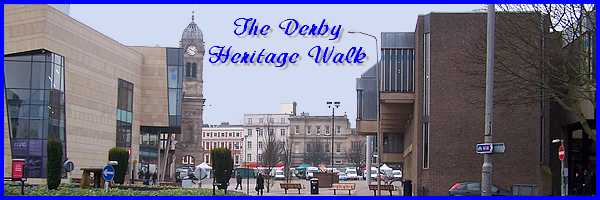
Irongate is not a particularly long street but is
packed with interesting buildings, many of which are historically
significant and form part of Derby's rich heritage.

The eighteenth century building now occupied by Lloyds TSB on
the corner of Sadler Gate bears a striking resemblance to Franceys's
House that we saw in the Market Place and this is not at all
surprising as it was created by the same mason. The building
served as offices for the Bemrose printing business during the
nineteenth century but before that it had been commandeered as
the residence of Sir John Gordon of Glenbucket when Bonnie Prince
Charlie was in town between the 4th and the 6th December 1745.
Bemrose moved on to become an international company based both
in the UK and also in America but before we move on, note the
width of Sadler Gate at the side of the bank.
|
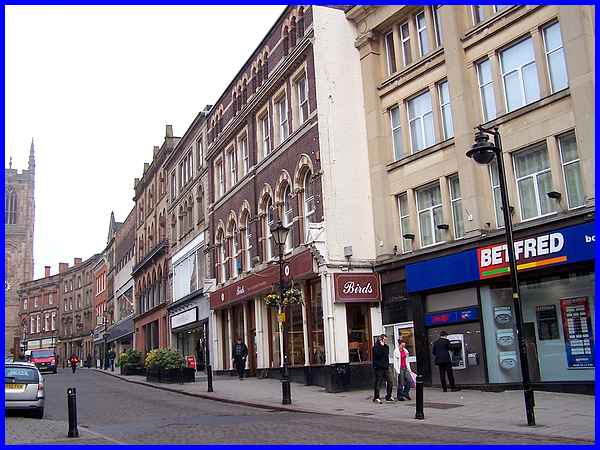
Until 1866 Irongate too was the same width as Sadler Gate
but it was widened between 1866 and 1867 when the whole of the
east side was demolished and all of these buildings above were
built after that date. Originally Irongate had grown up along
the course of a pre-historic trackway that existed long before
the settlement that eventually became Derby.
|
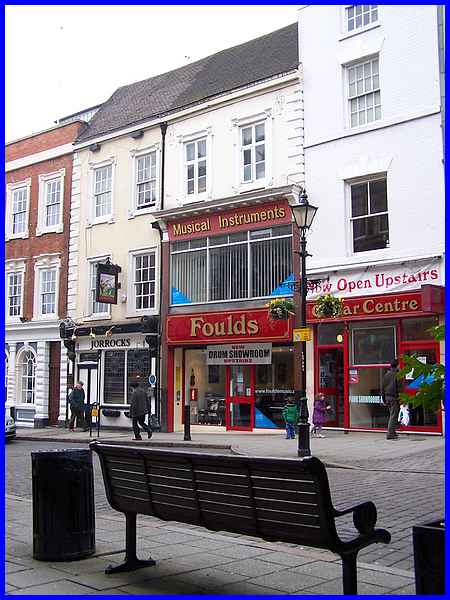
Back on the west side the single building that adjoins
Lloyds Bank has been split into two and now houses Jorrocks Bar
and Foulds Music Shop. Jorrocks Bar is more in keeping with the
building's past as it was once used as a coaching inn and was
known as the George. It was built in 1693 by Alderman Samuel
Heathcote who had to take out a one thousand year lease as the
frontage encroached onto the public thoroughfare. The original
inn survived for about a hundred and sixty of those years before
closing in 1853.
|
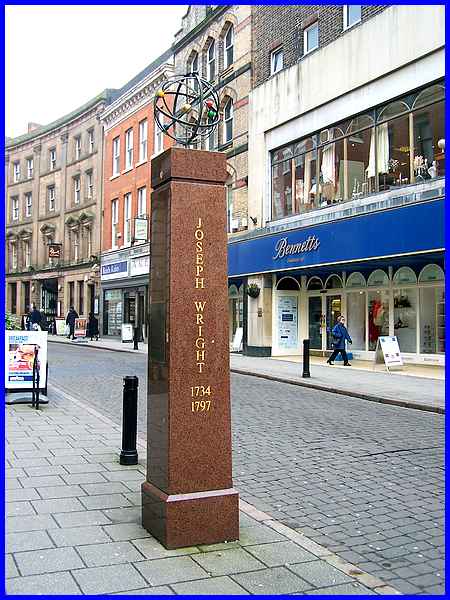
A little further along Irongate a marble pillar has been erected
as a memorial to the artist Joseph Wright who was born in Derby
in 1734. The memorial stands on the site of his birthplace and
was erected in 1992.
|

As well as bearing the dates of his birth and death (1797) the
memorial is surmounted by an Orrery (above right) and a plaque
that tells some of his life story. An Orrery was an instrument
used in the 1700s to study the movement of the planets and it
features in one of Wright's most famous works. The plaque reads
as follows:
"Joseph Wright of Derby 1734-1797 Born on September 3rd
1734 at 28 Irongate, Derby.
Son of an attorney, at 17 he trained in London with Thomas Hudson
whose pupils included Joshua Reynolds. Returning to Derby he
painted portraits of the local gentry exhibiting in London at
the Society of Artists. Drawing inspiration from the C17 Dutch
masters he was renowned for his exploitation of the dramatic
effect of light and shade and for paintings of industrial and
scientific subjects. His best known painting 'A Philosopher lecturing
on the Orrery' 1764-66 is represented in abstract form capping
this memorial. He travelled in Italy between 1773 - 1775 and
settled in Bath before returning to Derby in 1777. Wright continued
to develop his work exhibiting landscapes and portraits and was
elected an associate of the Royal Academy in 1781. This memorial
was erected by Derby City Council in 1992."
|
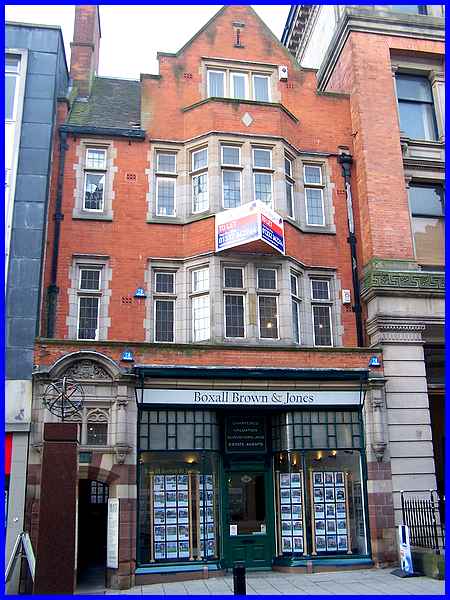
The memorial, which can be seen on the left of this image, stands
outside 34 Irongate which, although not the actual building,
is the location of Wright's birthplace. Examples of Wright's
work including his famous Orrery painting can be seen in the
Derby Museum and Art Gallery.
|
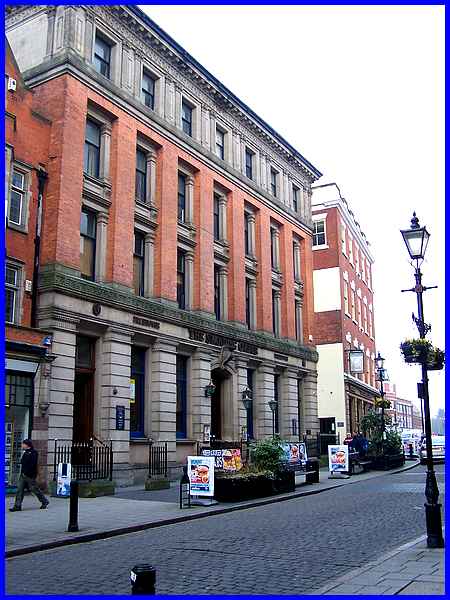
The next building of interest along Irongate is the Standing
Order pub but it's appearance and the clue in the name give away
its original usage as a bank. Built in 1880 to a design by J
A Chatwin, the guided walk leaflet to this part of Derby describes
the building as an "imposing and very grand structure"
and I wouldn't argue with that.
|
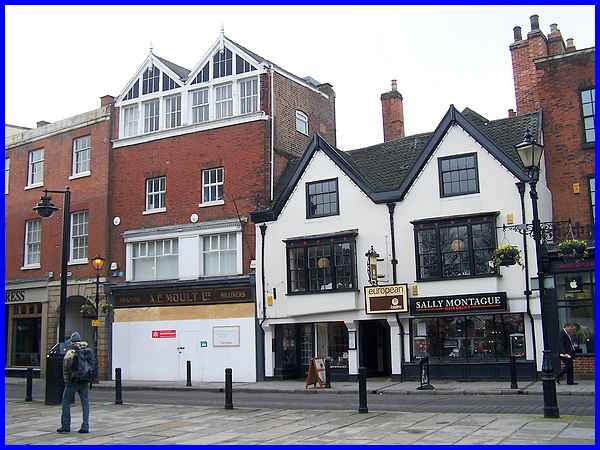
Two more buildings of note on Irongate stand almost directly
across from the Cathedral. On the left the building with the
boarded up frontage has recently been trading as an estate agent's
business but since closing the old shop sign for A E Moult, Draper
has been revealed. Much earlier in its history, it was the home
of John Whitehurst FRS (1713 - 1788) horologist, scientist and
philosopher and in 1855 underwent some structural changes. The
roof was removed and the glass structure that still exists was
added. This was to create a studio for the pioneer Victorian
photographer Richard Keene (1825 - 1894). Keene's work
includes many of the nineteenth century images of Derby and its
surrounding district.
On the right is a building that is thought to date from around
1540 and is believed to be the town house of the Meynells of
Bradley from about 1660. The aforementioned John Whitehurst had
his shop here and Richard Keene also had an early studio before
moving to his adjacent larger premises. A number of different
business enterprises now occupy the building.
|

